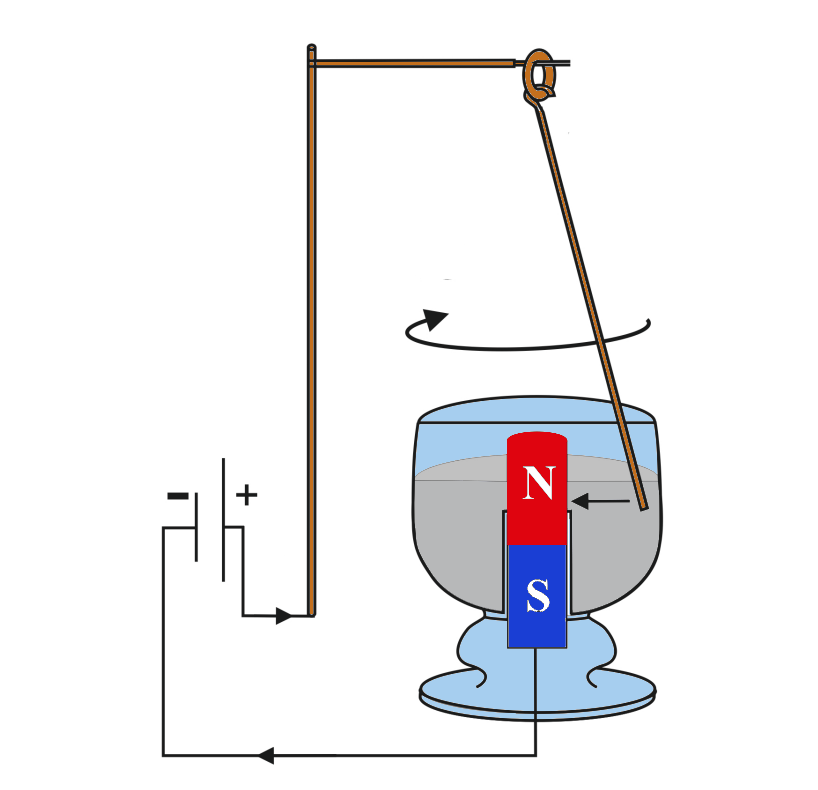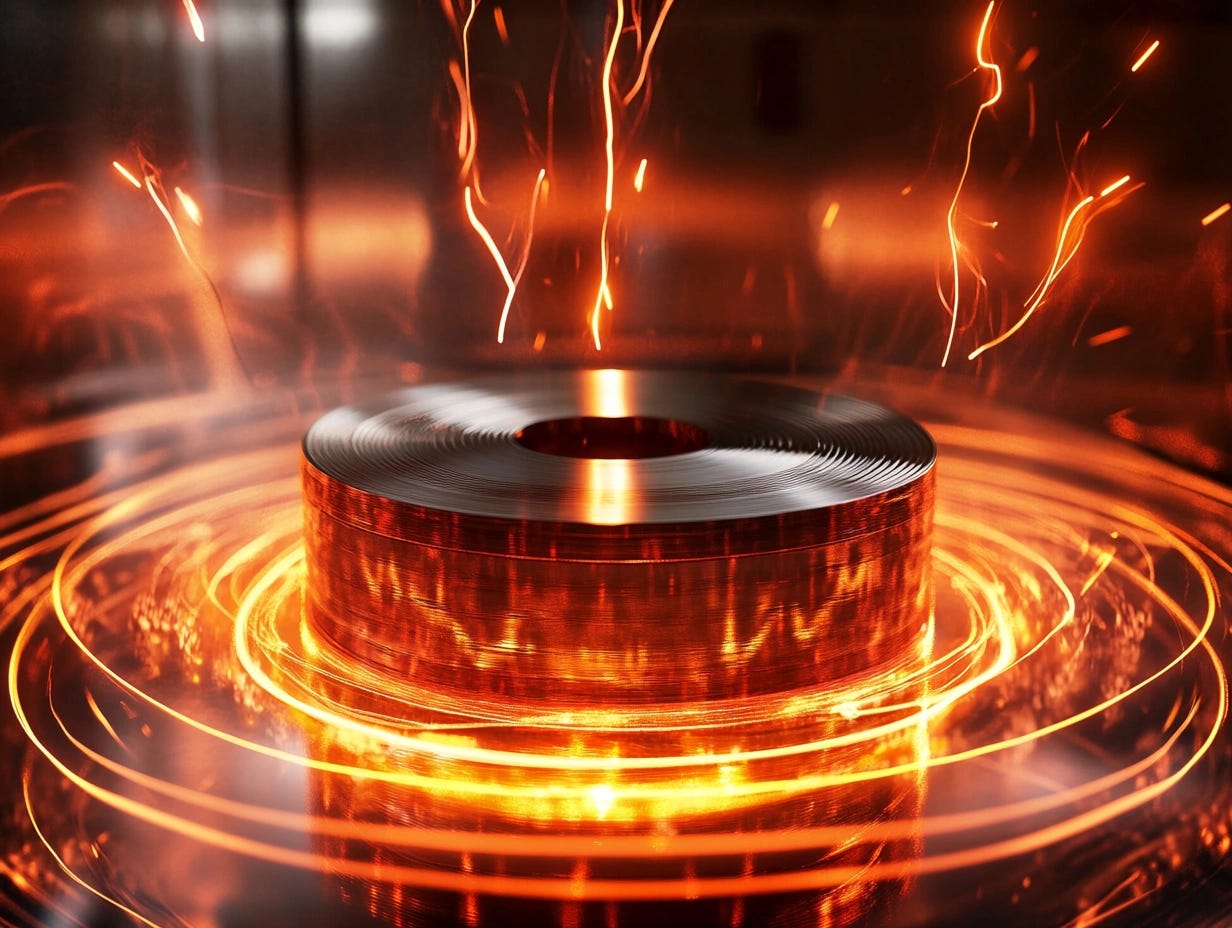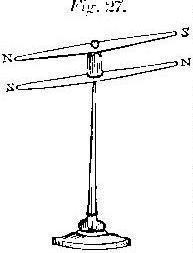Newton’s “discovery” of gravity was pretty impressive. No one’s denying that.
However, even if history went another way — say he got really lazy and decided to dedicate himself fully to religion, we would still be attached to this planet. Sure, we would have trouble going to the Moon and have fewer satellites over our heads. But, just as it is today, there would be no flying cars running on anti-gravity engines, so not a devastating loss really.
However electromagnetism — now that’s a different story. Our entire civilization runs on some form of it. The smartphone that’s blowing up because your popular or because it’s a Samsung. Almost everything you can find in a modern kitchen. The screen that’s transmitting this text into your eyeballs. And, of course, a very convenient side effect of it is being able to see things at all.
In the previous episode of Physics Rediscovered we saw how Hans Christian Ørsted showed, beyond any doubt, that electricity and magnetism are not two separate domains. He opened the door of electromagnetism by placing a wire, connected to a battery, next to a compass. You could say he really moved the needle on our understanding of the world.
The year of this discovery was 1820 and, once people saw what’s happening for themselves, everyone rushed to the lab. After all, a completely new window on the Universe just opened. In this scientific gold rush everyone wanted to be first.
Paris - the scientific capital of the world
One of the major, if not the center of scientific inquiry at the time was located in France. Though skeptical about the whole electromagnetism craze initially, the messieurs in Paris quickly changed their minds once they saw the needle swing.
Only several weeks after Ørsted’s experiment, the heavyweight Jean-Baptiste Biot and his sidekick, Félix Savart, turned the results of it into a law. By carefully placing the wire next to a magnet in a Coulomb-style experiment, they’ve managed to show that the force exerted by the wire on the magnet was proportional to the inverse square of the distance between the two. Not only that, it was also proportional to the current running through the wire. Today we refer to this as the Biot-Savart law, because duh…
But wait — current? What is that and wherever did they get that idea?
Well, he “appropriated“ it from another Frenchmen, one André-Marie Ampère. If you ever even stood close to something electrical, the name should sound familiar. You see, Ampère looked at Ørsted’s discovery and became convinced that there’s more to it than meets the eye. The wire, that eventually moved the compass needle, on its own was just a piece of junk. However, when connected to a battery, the wire became a fundamental part of a circuit.
And what is the circuit for? For a current to flow. Ampère acknowledged that he wasn’t the first to use this term. However, he was the first to treat it as more than just an abstract word, but a thing a actually happens in the wire. He couldn’t really tell what the current is deep inside, but he knew it flowed and how it did so, mattered.
He demonstrated that by repeating Ørsted’s experiment, but this time he reversed the connections of the wire to the battery. It turned out that the magnetic needle turned on way or another, depending on the direction of the mysterious current. Not stopping there, he also showed the this current is also present inside the battery pile itself by placing the compass in its vicinity.
These were completely new qualities at the time and it made some people angry. That’s because no one could agree on how to interpret Ørsted’s discovery. The man himself thought that it’s just magnetic particles flowing in a vortex outside the wire and exerting mechanical force on the compass needle. Biot thought that electricity literally turned the wire into a magnet and then its just magnet vs. magnet. Finally, Ampère suspected that all magnetism is, is just an effect of microscopic currents running through matter. All thought they were right and that others were wrong.
Ørsted probably thought the way he did because he didn’t see the needle turn 90 degrees off of its original position dictated by the Earth’s magnetic field. Ampère decided to deal with that by building an astatic compass and, in essence, it looked like this:
Take a magnetic needle, then another one and place it underneath the first one. Make sure the needles are pointing in the opposite directions and connect the two mechanically. Now, if there’s a magnetic field present, like the one from the planet, one needle will want to turn one way, the other needle the other and both forces cancel out.
With the Earth’s magnetic field out of the way Ampère conducted his experiment and made the needles turn perpendicular to the wire. Ørsted never got convinced, though. That annoyed Ampère to no end but didn’t discourage him. There was still the issue of tackling the whole thing about stuff being magnetic in the first place. Here’s what Ampère had to say about that:
“This action that M. Oersted discovered led me to look for the interaction of two electric currents, the action of the Earth on a current, and how the electricity might produce all phenomena presented by the magnets…”
So where did he get that idea?
I’m paraphrasing strongly but it went like the following. We saw that the compass needle is set by the Earth’s magnetic field, but then placed an electric wire next to it and witnessed the needle turn. We knew that this apparent magnetism of the wire is coming from the current running through it. But what if it were the other way around? Say, we had a magnet next to the compass and that magnet turned the needle, as expected. Then, somehow we would discover that the Earth’s magnetic field is trying to turn the needle its own way. Would it be absurd to conclude that the Earth’s magnetic field is caused by a current running through the planet, just as through the wire in the former scenario?
Ampère thought that it is not absurd at all and went on a mission to prove that electric currents are at the heart of all magnetic things. In the process, he devised his probably most famous experiment based on a simple principle. Because the only thing better than a wire with a current running through it are two wires.
The experiment was dead simple. Place a wire next to another one, so that they are parallel to each other and run a current through both. Ampère observed that if the currents run in the same direction in both wires, they attract each other. If the currents are opposite, the force between the wires becomes repulsive. This result was a new quality and a big deal. Ampère demonstrated magnetic-like action without the presence of any magnetic objects. He saw this as “definitive proof“ of his electric-first theory.
But that’s not all. In the experiment, if you rotate one of the wires so that they become perpendicular to each other, the forces disappear. This reinforced the already strong suspicions, that these forces are weirdly directional.
Let’s take a moment here to appreciate what this meant. In the early 19th century people were living in a “Newtonian“ world, where all natural forces seemed to be central. Gravity “radiated” centrally from a massive body, period. Electrostatic force from a charged one seemed to do the same. But now, all of a sudden, a new force appeared which seems to have a preferred directionality. All this was turning peoples’ brains into mush and not everyone could handle it. Though debatable, Biot probably never moved forward with his work, as he just couldn’t shake that notion of centrality.
Oh and mind you, the year is still 1820. Ørsted did his experiment like yesterday. The speed, at which physics progressed in the 19th century was just staggering. I think people back then just didn’t sleep, at all.
London - the scientific capital of the world
By 1821 Ampère slowed down a bit, as he got tired for some reason. Meanwhile, the gents of London got jealous and wanted to get on the action themselves.
Weirdly enough, the next milestone came from a no-name chemists — Michael Faraday. Just like Ampère, he was self-taught and just like him, he about disrupting chemistry and physics. His contributions to chemistry make a story of its own, but I will leave telling it for someone who wants to write Chemistry Rediscovered. What I will tell you however is that looking at the journeys of Ampère, Faraday and others of the like, young self-starters entering the realm of old, grumpy academics and causing all kinds of chaos — that makes me think that impostor syndrome simply wasn’t a thing back then.
So what did Faraday do this time? He took the electromagnetic world for a spin.
Looking at Ørsted’s and Ampère’s experiments he was amazed, but not fully satisfied. He felt there’s more the story. For instance, he believed the experiments needed more freedom. Fixed wires were pulling or pushing, compass needles were rotating around the pin holding them in place, but what about other movements? To Faraday, the whole affair was constraining and suffocating.
Now what do people do when they feel like that? They try to escape. Most people, that is. The Faraday’s of the world do experiments instead. He is what he came up with:

He took a cup and stuck a magent inside. He connected that to one end of a battery. The other end was connected to a copper frame with a copper ring at the end. From that ring copper stick hung freely. Everything was very coppery. The end of that stick was immersed in mercury which acted as a conductive fluid, making the whole thing a closed circuit. When he did so, the stick started to rotate around the magnet, swirling the mercury — one hell of a stirred martini.
Today it may seem like a copper stick rotating around a magnet is no biggie. However, at the time, it blew everyone out of the water for many reasons. For one, perhaps unintentionally, Faraday just developed the world’s first electric motor — attach something to the end of the swirly stick and watch it barely run. Additionally, the weird rotating movements brought back Ørsted’s notions of magnetic magic swirling in vortices around conducting wires. Also, on a more personal and competitive note, it told Ampère that his break time was over.
Ampère descriptions so far, of what he now called electrodynamics, did not predict this spinning behaviour. He went back to the lab and at that point it became a competition on who’s gonna produce the most fancy effect with magnets and wires. He reproduced Faraday’s experiment and then cranked it up to eleven by doing the same but using the Earth’s magnetic field.
Faraday made the wire rotate around a magnet and he wagered it should be possible to rotate a magnet around its North-South axis. Alas, this is where he ended up:
“Having succeeded thus far, I endeavoured to make a wire and a magnet revolve on their own axis by preventing the rotation in a circle round them, but have not been able to get the slightest indications that such can be the case; nor does it, on consideration, appear probable.”
Ampère responded:
“Though I prefer wine, hold my beer nonetheless, please“
99% historical accuracy on that quote, but rotate the magnet he did. His setup was a little tricky, but today anyone can do that at home. I found this 13 year-old video depicting this nicely.
Further, ever more complex experiments followed. However, eventually, Faraday got sidetracked with chemistry again and, in 1827, Ampère took a back seat after publishing his Memoir on the Mathematical Theory of Electrodynamic Phenomena, Uniquely Deduced from Experience — a title that sounds like a story of its own (full work in English available here).
Ohmmmmmm
As the guys took a break, so shall we. However, be assured that we will meet Michael Faraday again.
Before we go, let’s do a little meditation.
Talking about electricity and magnetism is difficult as these concepts defy basic intuition, the latter probably more than the former. If it’s any consolation, it was no easier back in the 19th century. It was probably even more confusing since they lacked the proper words to talk about what was happening.
By proper, I mean defined. People back then were talking about quantity, velocity and whatnot to describe whatever the electric current, running in the wire might be. Then there was the degree of electrification, intensity or tension used to describe the tendency of electric stuff to do electric things, like attract or repulse. There were moments where people used all of those interchangeably, baffling everyone probably as much as themselves. Needless to say, it was a mess.
Through his many experiments, Ampère made it clear that the concepts of electric current, its intensity and electric tension are not the same and should be treated separately. That was great, but did that mean they were completely unrelated? That was a bit hard to tell until Georg S. Ohm entered the stage.
Tired of teaching ungrateful brats in the Gymnasium in Cologne, he decided to make use of the local lab and science some sense into this electric bonanza. His weapon of choice was a magnetic needle, like the one in a compass, attached to a torsion mechanism, similar to what we’ve seen Coulomb do here. Then he went about attacking the needle with a wire like Ørsted did.
Everyone was growing ever convinced that it is the intensity of the current in the wire that dictated the degree of magnetic effects around it. With that in mind, Ohm figured, that the degree to which the needle turned must then be a measure of that intensity. However, unlike everyone before him, he decided to check how important the wire itself is in this whole picture.
He tried short wire, long wires, thin and thick. Wires made from copper and from vibranium, before Captain America had any. What he found is that the length of the wire makes a huge difference. The longer the wire, the less the needle turned, so that must’ve meant a drop in the intensity of the current. His conclusion was that there’s something in the wire, at every section of it, that creates resistance to the incoming electricity. The longer the wire the more resistance, hence the drop in the intensity.
Eventually he came up with this:
where the large X was the degree that the magnetic needle turned, a and b, where some constant elements of the experiment and the small x was the resistance increasing with the length of the wire.
Today, we recognize X as the intensity of the current, a (then the tension) as voltage and b+x as the resistance in the system. Perhaps in a more familiar form:
And that’s how Ohm’s law was made. But before it was accepted as such, at first it was ridiculed to no end, mostly for social reasons (personal conflicts, status, etc… — long story). The truth always wins in the end however, and as more sophisticated measuring devices appeared (galvanometers and ammeters), more people managed to get Ohm’s results. Eventually, everyone felt stupid for making fun of him and they gave him a bunch of medals and a place with the Avengers (don’t quote me on that).
This electromagnetic revolution’s days of kicking ass and chewing bubble were far from over. For a moment we need to break the circuit here and recharge our Volta’s piles. We will be back soon with more electrifying tales of Physics Rediscovered.
See you then!






Horace Lamb, in his published lecture The Evolution of Mathematical Physics, speaks about the scientists of this time, and Ampère in particular, "I should like to be able to tell more about these men, about their characters, the vicissitudes of their lives and how these reacted on their work, their ambitions, their friendships, and even their quarrels and jealousies. Much that would be interesting is not to be found in official obituary notices. Sometimes an indication of these more human qualities has survived, such as the charming account of Ampère’s early career, of the tragedy of his father’s death in the Revolution, and of his idyllic love-story, and even the foible attributed to him in his later years, of carrying off in all innocence the wrong umbrella, even when there was no right one!"